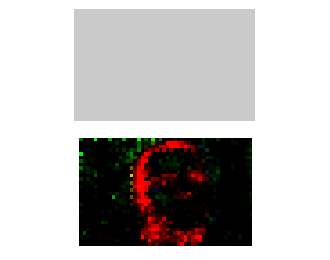Vision - Computing efficiently
Retinal prostheses aim to restore vision in patients with damaged photoreceptors by bypassing the retina, the sheet of brain tissue that lines the eyeball. A retinal implant's size, weight, and power consumption must be comparable to the retina's, which is half a millimeter thick, weighs half a gram, and consumes a tenth of a watt.
Existing prosthesis designs simply stimulate when incident light, captured by a video camera, exceeds a threshold.
The retina’s ganglion cells, whose signals the optic nerve carries, only interpret a small portion of the visual scene for the brain. They compare the signals of half a dozen to several hundred photoreceptors. They spike when the overall intensity changes, or when the central region differs from the surrounding one. It is the percentage change over time or space—rather than the absolute change—that matters; an adaptation that allows us to see in dim starlight as well as bright sunlight.
We have replicated the ganglion cells' spiking responses in an artificial retina by emulating the retina's neural circuits with transistor circuits.
It is feasible to implant our silicon retina inside the eye as it dissipates only 60 milliwatts—a thousandth of what a computer consumes. When mounted flat against the retina, the chip could be wired to stimulate healthy ganglion cells, which lie near the surface, allowing a blind patient to see again. We are currently duplicating the cortex’s visual perception in silicon.
